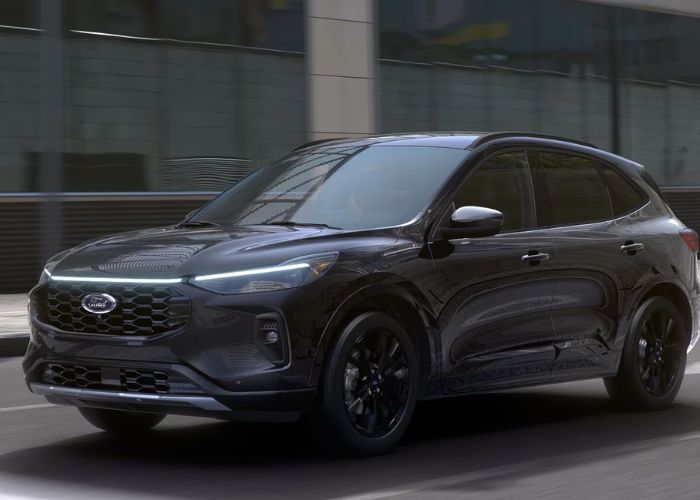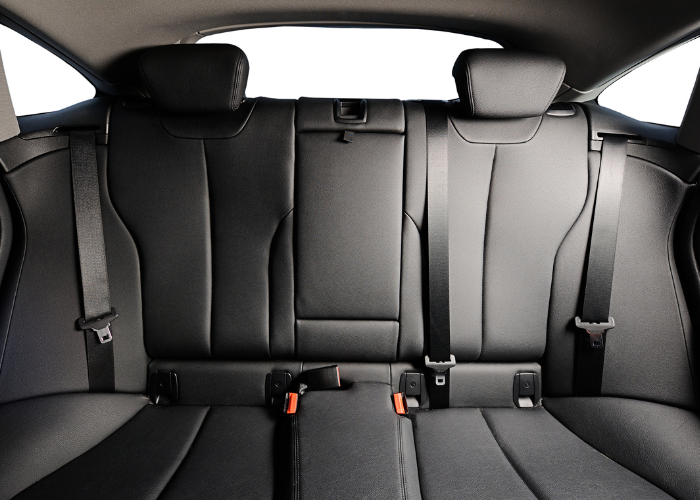
Dual Catalytic Converters in the Ford F150
The Ford F150 boasts a dual catalytic converter system, comprising two catalytic converters – one in the front and another in the back. This design allows the F150 to efficiently address emission regulations and maintain lower greenhouse gas production, ensuring the preservation of the atmosphere.
By having both a front-end and back-end converter, the truck achieves better emission control, making it a reliable choice to comply with federal emission laws in various regions across the globe. This section delves into the significance of the F150’s dual-cat setup and its contribution to a cleaner environment.

Understanding the Role of Catalytic Converters
Catalytic converters are essential emissions control devices installed in vehicles, including the Ford F150. Their primary function is to reduce harmful pollutants in exhaust gases, such as carbon monoxide, nitrogen oxides, and hydrocarbons, converting them into less harmful substances like carbon dioxide, nitrogen, and water vapor.
By utilizing precious metals like platinum, palladium, and rhodium, these converters facilitate chemical reactions that promote cleaner emissions. In this section, we will explore the mechanics behind catalytic converters and their crucial role in minimizing the environmental impact of vehicles like the Ford F150.
Emission Compliance and the Ford F150
The Ford F150’s innovative dual catalytic converter system plays a pivotal role in maintaining exceptional emission compliance. This groundbreaking technology enables manufacturers to produce environmentally responsible vehicles that align with rigorous global regulations, ensuring a cleaner and greener future for generations to come.
By installing two catalytic converters, one in the front and one in the back, the F150 enhances its ability to effectively manage exhaust emissions. This section highlights the F150’s commitment to emission compliance and how its catalytic converter system plays a vital role in achieving this goal.

Maintenance and Replacement of Ford-F150 Catalytic Converters
Proper maintenance and timely replacement of catalytic converters are indispensable for the Ford F150 to uphold its peak performance and stringent emission control. By conducting routine inspections and diligently following the manufacturer’s maintenance schedule, owners can prolong the lifespan and efficiency of these vital components, ensuring eco-friendly driving.
If a catalytic converter needs replacement, factors such as the F150’s model, location, and labor costs can impact the overall expense. This section discusses the importance of proper maintenance and provides insights into the costs associated with replacing catalytic converters in the Ford F150.

Environmental Impact and Value of Catalytic Converters
Catalytic converters, including those in the Ford F150, hold immense value due to their role in reducing harmful emissions and preserving the environment. The 2007 Ford F150, despite being more than a decade old, showcases the significance of its catalytic converter, with an average cost of around $319.
This section brings attention to the profound environmental impact of catalytic converters, highlighting their significance in vehicles such as the F150 to forge a path toward a cleaner and more sustainable future. By promoting cleaner emissions, these converters play a crucial role in fostering a greener world. Read about How Wide Is a Ford F150 here.
Frequently Asked Questions
What is the purpose of the dual catalytic converter system in the Ford F150?
The dual catalytic converter system in the Ford F150 serves to efficiently address emission regulations and maintain lower greenhouse gas production. It ensures better emission control, making the truck a reliable choice to comply with federal emission laws in various regions across the globe.
What role do catalytic converters play in reducing harmful exhaust emissions in a Ford F150?
Catalytic converters are essential emissions control devices installed in vehicles, including the Ford F150. They are responsible for reducing harmful pollutants in exhaust gases, such as carbon monoxide, nitrogen oxides, and hydrocarbons, by converting them into less harmful substances like carbon dioxide, nitrogen, and water vapor.
How does the Ford-F150 ensure a high level of emission compliance with catalytic converter system?
The Ford F150 ensures a high level of emission compliance by employing a dual catalytic converter system. By having both a front-end and back-end converter, the truck enhances its ability to effectively manage exhaust emissions, making it an eco-friendly choice for drivers worldwide.
What factors should be considered for maintaining and replacing catalytic converters in the Ford F150?
To maintain and replace catalytic converters in the Ford F150, regular inspections and adherence to the manufacturer’s maintenance schedule are crucial for optimal performance and emission control. Factors such as the F150’s model, location, and labor costs can impact the overall expense of replacement.
How do catalytic converters, including those in the Ford F150, contribute to environmental preservation?
Catalytic converters, including those in the Ford F150, hold immense value due to their role in reducing harmful emissions. By converting pollutants into less harmful substances, they contribute to a cleaner and greener future, showcasing the F150’s commitment to environmental preservation and sustainable automotive practices.
Conclusion
The Ford F150’s dual catalytic converter system demonstrates its commitment to environmental preservation and emission compliance. By having two converters – one in the front and another in the back – the F150 ensures efficient exhaust gas treatment, reducing harmful pollutants while producing lower greenhouse gases.
As an essential emissions control device, the catalytic converter plays a vital role in keeping the atmosphere clean and adhering to stringent emission regulations worldwide. Understanding the significance of these converters enables us to appreciate the Ford F150’s efforts in providing an eco-friendly and powerful pickup truck.








![Magnetic Ford EcoSport Fuel Economy [2023]](https://ford-it.com/wp-content/uploads/2023/10/Magnetic-Ford-EcoSport-fuel-economy-150x150.jpg)
![Ford Edge Titanium With Ceramic Leather [2023]](https://ford-it.com/wp-content/uploads/2023/10/Ford-Edge-Titanium-With-Ceramic-Leather-150x150.jpg)
![Ruby Red Ford Fusion Hybrid Reviews [2023]](https://ford-it.com/wp-content/uploads/2023/10/Ruby-Red-Ford-Fusion-Hybrid-Reviews-150x150.jpg)
![Ford Maverick Lightning Blue Interior Features [2023]](https://ford-it.com/wp-content/uploads/2023/10/Ford-Maverick-Lightning-Blue-Interior-Features-150x150.jpg)
![Ford Explorer Platinum in Star White [2023]](https://ford-it.com/wp-content/uploads/2023/10/Ford-Explorer-Platinum-in-Star-White-150x150.jpg)
![Blue Jeans Ford Ranger Fuel Efficiency [2023]](https://ford-it.com/wp-content/uploads/2023/10/Blue-Jeans-Ford-Ranger-Fuel-Efficiency-150x150.jpg)
![Shadow Black Ford Mustang GT Horsepower [2023]](https://ford-it.com/wp-content/uploads/2023/10/Shadow-Black-Ford-Mustang-GT-Horsepower-150x150.jpg)
![Ford Escape Titanium In Sedona Orange [2023]](https://ford-it.com/wp-content/uploads/2023/10/Ford-Escape-Titanium-In-Sedona-Orange-150x150.jpg)
![Bronze Fire Ford Expedition Off-Road Capabilities [2023]](https://ford-it.com/wp-content/uploads/2023/10/Ford-F-250-Super-Duty-in-Agate-Black-150x150.jpg)
![White Platinum Ford Fusion Reviews [2023]](https://ford-it.com/wp-content/uploads/2023/10/White-Platinum-Ford-Fusion-Reviews-150x150.jpg)
![Magnetic Ford Edge Technology [2023]](https://ford-it.com/wp-content/uploads/2023/10/Magnetic-Ford-Edge-Technology-150x150.jpg)
![Ford EcoSport in Lightning Blue [2023]](https://ford-it.com/wp-content/uploads/2023/10/Ford-EcoSport-in-Lightning-Blue-150x150.jpg)
![Ford Focus ST Performance Blue [2023]](https://ford-it.com/wp-content/uploads/2023/10/Ford-Focus-ST-Performance-Blue-150x150.jpg)
![Gray Ford Ranger Towing Capacity [2023]](https://ford-it.com/wp-content/uploads/2023/10/Gray-Ford-Ranger-Towing-Capacity-150x150.jpg)